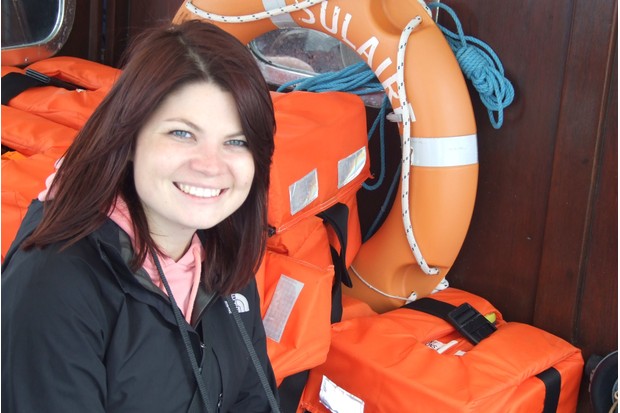1. Cock-of-the-rock (pictured above), Manu NP, Peru
There are beautiful birds and there are strange birds, and normally they are distinct groups. But there is an exception to this rule – the shimmering, neon-orange-and-black-coloured Andean cock-of-the-rock with its perfect semicircle of a crest atop its head (though in some ways the Guianan species looks even more eccentric). Found in the mid-altitude cloud forests of the Andes, the cock-of-the-rock is also renowned for its lek dancing, in which groups of males strut their stuff to potential females. The upper reaches of Manu National Park, one of the world’s biodiversity hotspots, in southern Peru is as good a place as any to start your quest.
2. Southern brown kiwi, Stewart Island, New Zealand
New Zealand’s Stewart Island is the stronghold of the country’s national bird, the kiwi. In fact there are six species to be found here, including the endemic subspecies of the southern brown kiwi or tokoeka. These bizarre, flightless creatures are the closest living relatives of the extinct – and even more extraordinary – elephant birds of Madagascar, and it’s said they are easier to see here because they are not purely nocturnal. Some 20,000 were recorded on the island in the 2013 census.
3. Gyrfalcon, Lake Myvatn, Iceland
With a wingspan at least 15 per cent greater than a peregrine’s, the gyrfalcon (pronounced ‘jer’ as opposed to ‘grr’) is the world’s largest and heaviest falcon, and as a specialist of the Arctic tundra inhabits some of the world’s most spectacular locations. There are no guaranteed sightings for a bird as elusive and as well camouflaged as the gyrfalcon, but on the plus side Lake Myvatn is easy to access and worth visiting for other reasons. Watch for a gyrfalcon circling the sky (the species may get its common name from gyrus, the Latin for circle) in search of its food item of choice, the ptarmigan.
www.wildlifeiceland.is/birdtours
4. Red-crowned crane, Tsurui Ito Tancho Sanctuary, Japan
Perhaps more than any other bird, cranes are renowned for their graceful balletic dancing, and during the winter in Tsurui Ito Tancho Sanctuary, on the island of Hokkaido, you can watch red-crowned cranes performing on a stage of snowfields. As well as dancing, courtship involves a duet of calls in which male and female stand together with their heads thrown backwards and their beaks pointing towards the sky. In the summer they breed in the Kushiro Shitsugen marshes. The bird’s Japanese name Sarurunkamui means ‘god of the wetland’.
5. Bearded vulture, Ordesa NP, Spain
The bearded vulture is also known as the lammergeier – the ‘lamb-hawk’ – in the mistaken belief that it takes lambs. A better name for the huge and distinctive bearded vulture is its Spanish one, quebrantahuesos – the ‘bone-breaker’. It’s said to be the only living bird species that specialises in eating bone marrow, and it does this by dropping bones from a height to smash onto the rocks below. It’s rare in Europe, with no more than 700 breeding pairs in total, but you’ve got an excellent chance of a sighting in the Spanish Pyrenees and Ordesa National Park in particular.
6. Sri Lanka blue magpie, Sinharaja Forest Reserve, Sri Lanka
For a small country, Sri Lanka has a good number of species found nowhere else in the world, and 19 (out of 20 endemics in total) can be seen at Sinharaja Forest Reserve. With its bold chestnut-and-vivid-blue plumage and bright red bill, eye rings, legs and feet, the blue magpie is as spectacular as it is rare. Though finding wildlife in dense rainforest is never easy, this can be a noisy species that moves around in flocks of as many as six or seven individuals.
7. Wandering albatross, South Georgia, South Atlantic
The world’s largest and surely most romantic seabird, the wandering albatross spends much of its life at sea, gliding low over the waves of the Southern Ocean on its 3m wingspan. When it comes ashore to breed – only once every two years at most – one of the places it chooses is Prion Island, South Georgia. Though numbers here have decreased in the past 30 years – they were down from an estimated 60 pairs in 1984 to 29 in 2013 – this still provides intimate views of these extraordinary birds in a thrillingly wild and windswept location.
8. Southern carmine bee-eater, South Luangwa NP, Zambia
Some sources say breeding colonies number up to 1,000 birds, others up to 10,000, but watching a group of even 100 of these enchanting birds can be a magical experience. There are, it’s true, many places in Southern Africa to see them, but standing by the banks of the untamed and undammed Luangwa River, as the heat of the day begins to dissipate, is surely about as perfect a spot and time as any. They return from coastal areas of Mozambique and Tanzania around September, staying until the New Year. Busy as well as beautiful, they dig nestholes in the river’s sandy banks that are up to 2m deep.
